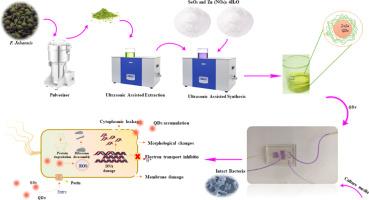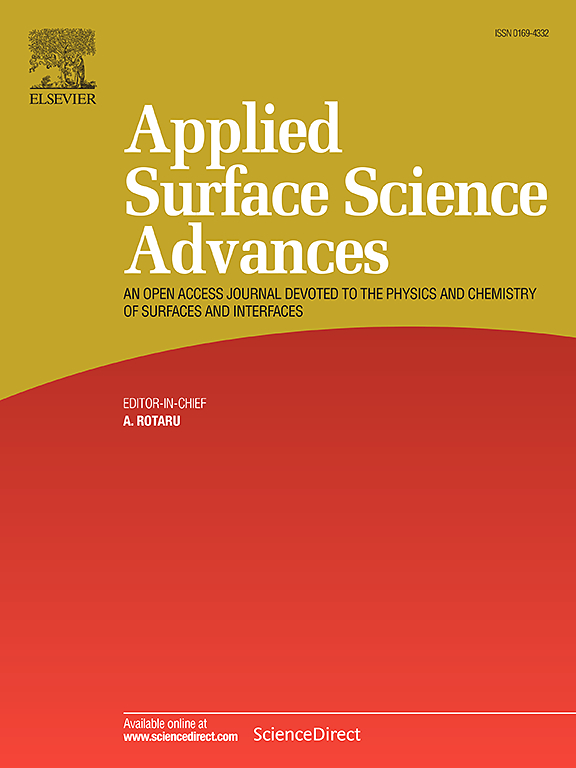Evaluation of biological properties of green-synthesized ZnSe quantum dots using microfluidic systems: A novel approach to enhancing antibacterial activity
IF 8.7
Q1 CHEMISTRY, PHYSICAL
引用次数: 0
Abstract
This study developed a green, eco-friendly, and rapid method for synthesizing zinc selenide quantum dots (ZnSe QDs) using the aqueous extract of Ficus johannis as a natural reducing and stabilizing agent. The extract was prepared through ultrasonic treatment at 40 °C for 15 min, enabling the synthesis of ZnSe QDs via the reaction between zinc nitrate and selenium dioxide. The ZnSe QDs were characterized using UV–Vis spectroscopy (absorption at ∼410 nm), fluorescence spectroscopy (emission at ∼473 nm), transmission electron microscopy (spherical morphology), and X-ray diffraction, (crystalline structure), confirming their spherical shape and average size of 6.9±1.2 nm. The synthesized ZnSe QDs demonstrated significant antibacterial activity, with minimum inhibitory concentration values of 0.8 mg/mL against Gram-positive B. subtilis and 1.6 mg/mL against Gram-negative Escherichia coli. Mechanistic studies revealed damage to bacterial membranes via potassium leakage and protein/nucleic acid release, supported by scanning electron microscopy observations of bacterial cell lysis. Using a microfluidic system further enhanced antibacterial efficacy, enabling faster and higher potassium leakage than conventional methods. Toxicity assays using Allium cepa bulbs revealed cytotoxic effects, suggesting the need for further research to mitigate toxicity for biomedical applications. Overall, this study showcases a green synthesis method with promising potential in nanomedicine.

利用微流体系统评价绿色合成ZnSe量子点的生物学特性:一种增强抗菌活性的新方法
本研究开发了一种绿色、环保、快速的合成硒化锌量子点(ZnSe QDs)的方法,该方法以无花果水提取物为天然还原剂和稳定剂。将提取液在40℃下超声处理15 min,通过硝酸锌与二氧化硒的反应合成ZnSe量子点。利用紫外可见光谱(吸收~ 410 nm)、荧光光谱(发射~ 473 nm)、透射电镜(球形形貌)和x射线衍射(晶体结构)对ZnSe量子点进行了表征,证实了它们的球形和平均尺寸为6.9±1.2 nm。合成的ZnSe量子点对革兰氏阳性枯草芽孢杆菌的最小抑菌浓度为0.8 mg/mL,对革兰氏阴性大肠杆菌的最小抑菌浓度为1.6 mg/mL。机制研究揭示了细菌膜的损伤通过钾泄漏和蛋白质/核酸释放,并通过扫描电镜观察细菌细胞裂解。使用微流控系统进一步提高了抗菌效果,与传统方法相比,可以实现更快、更高的钾泄漏。使用葱球茎的毒性试验显示细胞毒性作用,表明需要进一步研究以减轻生物医学应用的毒性。总的来说,本研究展示了一种绿色合成方法,在纳米医学中具有很大的潜力。
本文章由计算机程序翻译,如有差异,请以英文原文为准。
求助全文
约1分钟内获得全文
求助全文

 求助内容:
求助内容: 应助结果提醒方式:
应助结果提醒方式:


